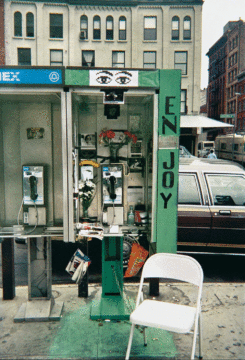Sam Thorne at Frieze:
 Paul Auster, Aldous Huxley, Thomas Mann, Susan Sontag, John Updike, Oscar Wilde and Virginia Woolf – many novelists who have written about fictional artists have also produced criticism. Indeed, one of the great novels of the 20th century, Marcel Proust’s In Search of Lost Time, began life as a work of criticism, a series of essays arguing against the author Sainte-Beuve. This voluminously chatty work is, over the course of its 1.5 million words, peppered with the names of more than 100 real-life artists – from Giotto and Corot, to Bellini and Léon Bakst. By my rough estimate, Vermeer and Whistler are the most frequently referred to, though much dinner party gossip is given over to Édouard Manet’s 1863 painting Olympia (‘Nowadays nobody is in the least surprised by it. It looks just like an Ingres!’ exclaims a duchess). Amidst the masters mingle Proust’s contemporaries – little-known or forgotten academicians, as well as critics and collectors – above whom towers just one fictional artist: Elstir, a famed painter whose seascapes, according to the narrator Marcel, ‘break up that medley of impressions which we call vision’. Many have tried to identify the source of Carquethuit Harbour, which is said to be Elstir’s greatest painting: Manet’s Le Port de Bordeaux (1871) is often mentioned, along with Vuillard and Hokusai, while Michel Butor has pointed out that ‘Elstir’ is a Gallicized anagram of ‘Whistler’.
Paul Auster, Aldous Huxley, Thomas Mann, Susan Sontag, John Updike, Oscar Wilde and Virginia Woolf – many novelists who have written about fictional artists have also produced criticism. Indeed, one of the great novels of the 20th century, Marcel Proust’s In Search of Lost Time, began life as a work of criticism, a series of essays arguing against the author Sainte-Beuve. This voluminously chatty work is, over the course of its 1.5 million words, peppered with the names of more than 100 real-life artists – from Giotto and Corot, to Bellini and Léon Bakst. By my rough estimate, Vermeer and Whistler are the most frequently referred to, though much dinner party gossip is given over to Édouard Manet’s 1863 painting Olympia (‘Nowadays nobody is in the least surprised by it. It looks just like an Ingres!’ exclaims a duchess). Amidst the masters mingle Proust’s contemporaries – little-known or forgotten academicians, as well as critics and collectors – above whom towers just one fictional artist: Elstir, a famed painter whose seascapes, according to the narrator Marcel, ‘break up that medley of impressions which we call vision’. Many have tried to identify the source of Carquethuit Harbour, which is said to be Elstir’s greatest painting: Manet’s Le Port de Bordeaux (1871) is often mentioned, along with Vuillard and Hokusai, while Michel Butor has pointed out that ‘Elstir’ is a Gallicized anagram of ‘Whistler’.
more here.
